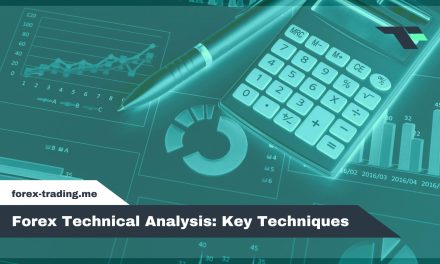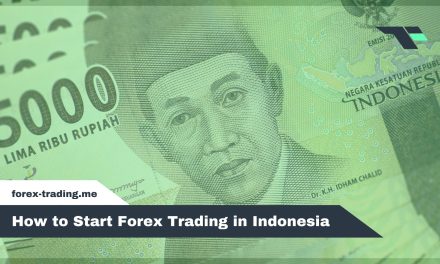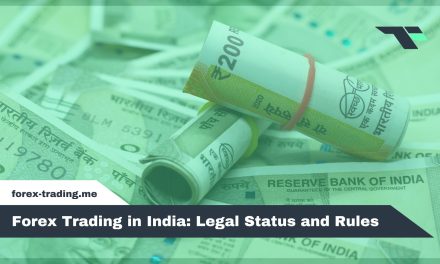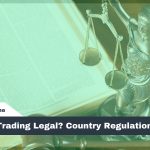
Is Forex Trading Legal? Country Regulations

Forex trading operates legally in over 150 countries worldwide, though regulatory frameworks vary considerably by jurisdiction. Major financial centers like the UK, US, and Australia maintain strict oversight through bodies such as the FCA, CFTC, and ASIC, requiring broker licensing and fund segregation standards. Emerging markets continue developing their regulatory structures, while some regions impose restrictions based on economic or religious considerations. Traders must verify broker authorization, understand local compliance obligations, and navigate varying tax requirements and consumer protections that differ markedly across borders, with evolving regulations shaping future market access.
Table of Contents
Global Regulatory Map
Forex trading enjoys legal status across more than 150 countries worldwide, though the specific regulatory frameworks and oversight mechanisms vary greatly between jurisdictions. Major financial centers such as the United Kingdom, United States, Australia, and European Union member states maintain well-established regulatory bodies that oversee forex market activities, including the Financial Conduct Authority (FCA), Commodity Futures Trading Commission (CFTC), and Australian Securities and Investments Commission (ASIC). Regional differences in licensing requirements, capital adequacy standards, and consumer protection measures create a complex patchwork of regulations that traders must navigate when selecting brokers and trading platforms.
Regional status & country list
Forex trading legality varies greatly across global regions, with developed markets in North America and Europe generally maintaining well-established regulatory frameworks that permit retail trading under strict oversight. Asia-Pacific and Middle Eastern countries present a more complex landscape, where some nations embrace forex trading with robust regulations while others impose restrictions based on religious or economic considerations. African and Latin American markets typically fall into emerging regulatory categories, with many countries still developing extensive frameworks to govern forex activities while balancing market access with consumer protection.
North America & Europe overview
When examining the regulatory landscape across North America and Europe, traders encounter some of the world’s most stringent and well-established forex oversight frameworks. The US implements CFTC oversight with 50:1 leverage caps on major pairs, while European markets operate under MiFID II reporting requirements with 30:1 leverage limits. The UK’s FCA regulates over 110 brokers, alongside Germany’s BaFin and Spain’s CNMV maintaining thorough supervision.
North American Framework
The United States operates under one of the most restrictive regulatory environments globally, governed by the Commodity Futures Trading Commission (CFTC) and the National Futures Association (NFA). All retail forex brokers must register as either Futures Commission Merchants (FCMs) or Retail Foreign Exchange Dealers (RFEDs), with minimum capital requirements of \$20 million plus 5 percent of liabilities exceeding \$10 million. The NFA imposes operational restrictions including maximum leverage of 50:1 for major currency pairs and 30:1 for exotic pairs, prohibition of hedging, and mandatory FIFO (first-in, first-out) position closing rules. These regulations stem from the Dodd-Frank Wall Street Reform and Consumer Protection Act, which granted the CFTC broad authority to regulate retail foreign exchange transactions. Brokers must provide comprehensive disclosure statements, maintain robust recordkeeping, and strictly segregate client funds, though activities involving physical delivery of foreign currency fall outside this scope.
European Union Harmonization
Through the European Securities and Markets Authority (ESMA), EU member states have harmonized their forex regulations, resulting in standardized leverage limits and client-protection measures. This unified approach ensures consistent rules across jurisdictions, making cross-border trading within the EU more seamless for retail investors.
United Kingdom Post-Brexit Framework
The Financial Conduct Authority (FCA) enforces stringent standards for UK forex brokers. Retail client funds must be segregated in separate accounts at reputable institutions, and brokers must issue monthly statements. Minimum capital requirements vary by authorization type. Leverage is capped at 30:1 for major currency pairs and as low as 2:1 for cryptocurrencies, and negative-balance protection is mandatory for retail clients. Brokers are prohibited from taking positions against their clients or making misleading marketing promises, and they must employ qualified senior-management professionals and offer client-education programs. Recent measures include permanent restrictions on CFD sales to retail investors and mandatory risk-warning disclosures showing the percentage of clients who lose money.
Germany’s BaFin Standards
BaFin’s regulatory regime emphasizes investor protection and financial stability. Forex brokers must meet strict capital-adequacy requirements, implement robust risk-management protocols, and keep client funds fully segregated from operational accounts. The framework also mandates transparent communications and provides effective dispute-resolution mechanisms for investors.
France’s AMF Oversight
The Autorité des Marchés Financiers (AMF) applies ESMA guidelines alongside specific French rules. Leverage limits range from 30:1 for major currency pairs to 2:1 for cryptocurrencies. Brokers must provide negative-balance protection, prohibit promotional bonuses, and display standardized risk warnings that clearly outline potential losses.
Spain’s CNMV Framework
Under MiFID II and ESMA guidance, the Comisión Nacional del Mercado de Valores (CNMV) requires investment firms to maintain a minimum capital of €730,000. Retail client funds must be segregated, and negative-balance protection is compulsory. Leverage restrictions align with ESMA standards, and promotional bonuses for retail trading accounts are banned.
Pros & cons in North America & Europe
Trading in North America and Europe typically presents a double-edged scenario where robust regulatory frameworks deliver exceptional investor protections while simultaneously constraining profit potential through mandatory leverage restrictions. European markets enforce 30:1 leverage limits alongside negative-balance protection and client fund segregation, contrasting sharply with other regions offering 500:1 leverage but fewer safeguards.
Asia-Pacific & Middle East overview
Beyond these established Western markets, the Asia-Pacific and Middle East regions present a dramatically different regulatory landscape where rapid modernization efforts collide with traditional financial principles and emerging market dynamics.
| Country/Region | Regulatory Body & Key Features |
|---|---|
| Australia | ASIC enforces 30:1 leverage cap with strict compliance standards |
| India | SEBI introduces enhanced reporting requirements for forex operations |
| UAE | CMA issues Shariah-compliant licenses accommodating Islamic finance principles |
| Singapore | MAS maintains liberal approach with extensive investor protections |
| Japan | FSA implements rigorous oversight with conservative leverage limits |
Australia’s Comprehensive ASIC Framework
The Australian Securities and Investments Commission (ASIC) has implemented comprehensive CFD and forex regulations that became effective in March 2021. The regulatory framework applies specifically to retail clients, with wholesale and professional investors remaining unaffected by leverage restrictions. ASIC regulations include leverage limits of 30:1 (3.33% margin) for major currency pairs, 20:1 (5%) for non-major currency pairs and major indices, 10:1 (10%) for non-major equity indices, and 5:1 (20%) for individual equities.
The ASIC framework includes margin close-out rules on a per-account basis, negative balance protection, restrictions on trading incentives, and standardized risk warnings. These regulations ensure that retail clients receive comprehensive protection while maintaining access to forex markets through regulated brokers.
India’s Restrictive SEBI and RBI Framework
India operates one of the world’s most restrictive forex regulatory environments, with the Reserve Bank of India (RBI) serving as the primary authority under the Foreign Exchange Management Act (FEMA) of 1999. The Securities and Exchange Board of India (SEBI) plays a complementary role by regulating forex derivatives traded on recognized exchanges such as NSE, BSE, and MCX-SX.
Indian forex regulation permits trading only in currency pairs that include the Indian Rupee (INR), specifically USD/INR, EUR/INR, GBP/INR, and JPY/INR. Limited cross-currency pairs like EUR/USD, GBP/JPY, and USD/JPY are now permitted but must be traded through SEBI-registered platforms. The regulatory framework strictly prohibits trading with foreign brokers offering cross-currency pairs not involving INR, the use of unregulated mobile applications or offshore platforms, and participation in binary options or high-leverage speculative schemes.
SEBI requires brokers to maintain registration as authorized trading members, report client positions and margin usage, and comply with margin trading, position limits, and disclosure requirements. The framework includes leverage limitations of around 20:1 for currency derivatives and enforces strict KYC requirements for all retail clients.
Japan’s Specialized FSA Approach
The Financial Services Agency (FSA) in Japan operates a unique regulatory approach that focuses primarily on Japanese customers and encourages domestic broker usage. The FSA maintains comprehensive oversight through regular interviews with regulated companies, including forex brokers, to assess customer treatment and corporate governance practices. Japanese regulation emphasizes financial stability, effective intermediation, sustainability, and anti-money laundering compliance.
The Japanese regulatory environment creates a somewhat isolated market where domestic brokers primarily serve Japanese customers, often lacking English-language websites, while Japanese retail customers are discouraged from using non-Japanese brokers. This approach reflects Japan’s preference for maintaining tight control over its financial markets and protecting domestic investors.
Pros & cons in Asia-Pacific & Middle East
While the Asia-Pacific and Middle East regions offer compelling opportunities for forex traders, including Malaysia’s generous 200:1 leverage allowance that far exceeds most Western markets, the regulatory landscape presents significant inconsistencies that demand careful consideration. Japan’s conservative 25:1 leverage cap contrasts sharply with Malaysia’s approach, while India’s 40% increase in regulatory fines during 2024 highlights enforcement unpredictability across jurisdictions.
Africa & Latin America overview
As emerging markets across Africa and Latin America establish their regulatory frameworks, forex trading accessibility varies dramatically between countries that have embraced extensive oversight and those still developing basic licensing requirements. South Africa’s FSCA introduced leverage guidance in 2023, while Nigeria recently began thorough broker licensing. Brazil requires minimum $1,000 deposits for retail traders.
| Country | Regulatory Body | Minimum Deposit |
|---|---|---|
| South Africa | FSCA | Variable |
| Nigeria | SEC | Licensed brokers |
| Brazil | CVM | $1,000 USD |
| Mexico | CNBV | Regulated |
| Chile | CMF | Authorized |
Pros & cons in Africa & Latin America
Trading forex in Africa and Latin America presents distinct advantages and challenges that reflect the varied regulatory maturity across these emerging markets. Advantages include low deposit requirements ranging $100–$1,000 and high leverage up to 100:1, creating accessible entry points. However, traders face significant risks including heightened market volatility, inconsistent regulatory oversight, and limited client-fund segregation protections in many jurisdictions.
Offshore Broker Risks
Many jurisdictions explicitly prohibit their residents from trading with offshore brokers that lack proper authorization. Indian regulations specifically forbid trading with foreign brokers offering cross-currency pairs not involving the INR, with violations subject to significant penalties under FEMA. Similarly, most regulated markets discourage or prohibit trading with unregulated offshore entities, recognizing the increased risks to retail investors.
Country Comparison Table
When evaluating forex trading opportunities across different jurisdictions, traders must examine several critical regulatory parameters that directly impact their trading experience and risk exposure. The most significant factors include maximum leverage limits, which range from conservative ratios like 50:1 in the United States to more permissive 30:1 in the European Union and Australia, alongside minimum deposit requirements that typically span $100 to $1,000 depending on the broker and jurisdiction. Additional protective measures such as mandatory fund segregation and negative-balance protection requirements vary substantially between countries, with some regions like the EU and UK enforcing these safeguards while others leave such protections to individual broker discretion.
| Country | Max Leverage | Min Deposit | Neg. Balance Protection | Client Fund Segregation | License Fee (USD) | Ongoing Compliance Cost |
|---|---|---|---|---|---|---|
| USA (NFA) | 1:50 | $100 | No | Yes | $20,000+ | High |
| UK (FCA) | 1:30 | £50 | Yes | Yes | £5,000–£50,000 | Moderate |
| UAE (DFSA) | 1:50 | $500 | Yes | Yes | $10,000+ | Moderate |
| South Africa | 1:400 | ZAR 2,000 | Yes | Yes | ~$2,000 | Moderate |
| India (SEBI) | 1:20 | ₹10,000 | Yes | Yes | ₹2,00,000 | Moderate |
| Brazil (CVM) | 1:20 | R$500 | No | Yes | R$25,000 | Moderate |
| Kenya (CBK) | 1:50 | $100 | Yes | Yes | $1,000+ | Moderate |
| Japan (FSA) | 1:25 | ¥10,000 | Yes | Yes | ¥5,000,000 | High |
Max leverage & minimum deposit
Regulatory frameworks across major trading jurisdictions impose distinct leverage limitations and minimum deposit requirements that directly impact trader accessibility and risk exposure. While the United States restricts retail forex leverage to a maximum of 50:1 and the European Union caps it at 30:1, certain Asian markets permit leverage ratios reaching up to 200:1, creating significant variations in trading conditions. Minimum deposit thresholds similarly range from as low as $100 with online brokers to $5,000 or higher when opening accounts with traditional banking institutions, reflecting different regulatory approaches to market entry barriers.
Leverage caps by jurisdiction
Understanding the specific leverage limitations in one’s jurisdiction represents an essential step for potential forex traders, as these regulatory caps directly impact trading capacity and required capital commitments. Japan restricts leverage to 25:1, while India maintains a 20:1 limit. The UAE permits 50:1 leverage, and South Africa provides guidance allowing up to 100:1 for qualified traders.
Deposit thresholds overview
While leverage limits establish the borrowing capacity for trades, minimum deposit requirements determine the actual barrier to entry across different markets and jurisdictions. These thresholds vary notably between emerging and developed markets, creating different accessibility levels for retail traders.
| Region | Maximum Leverage | Minimum Deposit |
|---|---|---|
| European Union | 30:1 | €100-€500 |
| United States | 50:1 | $250-$1,000 |
| Australia | 30:1 | AUD$200-$500 |
| Emerging Markets | 100:1+ | $50-$200 |
| Offshore Brokers | 500:1+ | $10-$100 |
Fund segregation & negative-balance protection
Beyond leverage limits and capital requirements, traders must understand how their funds are protected when brokers face financial difficulties. Fund segregation standards determine whether client money remains separate from broker operating funds, while negative-balance protection rules establish whether traders can lose more than their account balance during volatile market conditions. These regulatory safeguards vary considerably across jurisdictions, creating important considerations for trader safety and risk management.
Segregation standards
When evaluating forex brokers, traders must examine how regulatory authorities mandate the separation of client funds from broker operating capital, as this segregation serves as a primary safeguard against potential broker insolvency. Different jurisdictions implement varying standards for these protective measures.
| Regulator | Segregation Standard |
|---|---|
| FCA (UK) | Ring-fencing in top-tier bank |
| ASIC (Australia) | Annual audit of segregated accounts |
| CFTC (US) | Daily segregation calculations |
| CySEC (Cyprus) | Segregated bank accounts required |
| FSCA (South Africa) | Independent trustee oversight |
Negative-balance rules
Although forex brokers provide leverage that can amplify trading gains, this same mechanism creates the risk that traders may lose more than their initial deposit, particularly during volatile market conditions or gap events.
- EU regulations mandate negative-balance protection since 2018, preventing client debt obligations
- US brokers typically offer voluntary margin close-outs rather than guaranteed protection
- Protection mechanisms automatically close positions before accounts reach negative balances
- Regulatory variations mean trader safeguards differ notably between jurisdictions
Trader’s Checklist & Risk Assessment
Before opening a forex account, traders must conduct thorough due diligence to verify their chosen broker operates under proper regulatory oversight and maintains adequate financial protections. This verification process involves confirming the broker’s license status with relevant authorities, while simultaneously evaluating both legal risks stemming from jurisdictional regulations and operational risks related to the broker’s business practices. A systematic approach to broker evaluation helps traders avoid fraudulent platforms and guarantees compliance with local trading laws that govern their specific circumstances.
| Regulatory Category | Key Risks | Mitigation Strategies |
|---|---|---|
| Strict (US, UK, Japan) | Lower leverage, high compliance costs | Use regulated brokers, understand local rules |
| Moderate (UAE, Brazil, Malaysia) | Broker misrepresentation, evolving rules | Verify licenses, monitor regulatory updates |
| Lax/Unregulated (offshore, some Africa/Asia) | Fraud, no recourse, fund loss | Avoid unlicensed brokers, use dispute channels |
Broker license verification
Before engaging with any forex broker, traders must verify that the firm holds proper regulatory authorization through official government registries. The verification process involves checking the broker’s license status on platforms such as the CFTC/NFA registry in the United States, the FCA register in the United Kingdom, or ASIC’s database in Australia. This due diligence step helps traders confirm broker legitimacy and avoid potential fraud or regulatory violations that could result in financial losses.
Checking regulator registers
Broker-verification databases serve as the primary gateway for traders to confirm whether their chosen forex dealer operates under legitimate regulatory oversight. These official registers provide transparent access to licensing information and regulatory status updates.
- NFA Basic (USA) – Contains over 1,000 registered forex firms with detailed compliance records
- FCA Register (UK) – Lists all MiFID-authorized financial services providers
- ASIC Register (Australia) – Displays licensed derivatives dealers and their authorization scope
- SEBI Register (India) – Shows authorized forex brokers under Indian jurisdiction
Validating license status
Once traders locate their broker in regulatory databases, verifying the actual status and integrity of that license becomes the critical next step in due diligence. License validation requires checking expiry dates, reviewing disciplinary history, and investigating open proceedings. Regulatory bodies like the FCA publish public warnings and sanctions, while the CFTC imposes substantial fines averaging $1 million annually for violations.
Legal & operational risks
Even when forex trading operates within legal boundaries, traders face significant risks from broker insolvency, operational failures, and regulatory gaps that can result in financial losses. Dispute-resolution mechanisms vary widely between jurisdictions, with some offering formal arbitration processes while others rely on less structured mediation systems. Compensation schemes provide varying levels of protection, such as the UK’s Financial Services Compensation Scheme covering up to £85,000 per trader, though many jurisdictions offer limited or no investor protection.
Dispute-resolution channels
When forex trading disputes arise, traders need access to established resolution mechanisms that can address complaints against brokers or other market participants. These channels provide structured processes for resolving conflicts outside traditional court systems.
- Financial ombudsman services – Independent bodies that investigate complaints and make binding decisions
- Industry arbitration panels – Specialized forums handling technical trading disputes between parties
- Regulatory complaint procedures – Direct channels through government agencies overseeing broker conduct
- Consumer protection agencies – General dispute resolution services covering financial service complaints
Insurance and compensation schemes
While dispute resolution mechanisms address conflicts between traders and brokers, these processes cannot protect investors if a brokerage firm becomes insolvent or ceases operations entirely. Government-backed compensation schemes provide essential safety nets in such scenarios. The UK’s Financial Services Compensation Scheme covers up to £85,000, while the US Securities Investor Protection Corporation protects investors up to $500,000.
Tax & Compliance Overview
Understanding forex trading’s legal status extends beyond regulatory compliance to encompass significant financial obligations that traders must address. Tax liabilities on forex profits vary substantially across jurisdictions, with US traders potentially facing income tax rates up to 37%, while EU traders typically encounter rates between 20-25%. Additionally, traders operating through licensed entities or seeking professional credentials face substantial upfront licensing fees ranging from $10,000 to $50,000, along with ongoing compliance costs including audit expenses and regulatory reporting requirements.
Tax obligations & reporting
Forex trading profits carry distinct tax obligations that vary greatly between individual traders and corporate entities, with most jurisdictions treating individual gains as either capital gains or ordinary income depending on trading frequency and holding periods. Tax authorities worldwide have established specific reporting deadlines and required forms that traders must complete to remain compliant, such as the IRS Form 8949 in the United States, HMRC Self Assessment submissions in the United Kingdom, and quarterly disclosure requirements under India’s SEBI regulations. Understanding these reporting mechanisms becomes essential for traders to avoid penalties and maintain legal standing in their respective jurisdictions.
Individual vs corporate treatment
Most traders face a critical decision between conducting forex activities as individuals or through corporate entities, as this choice fundamentally shapes their tax obligations and compliance requirements.
- Corporate tax rates: UK applies 19% corporate tax while US imposes 21%
- Loss treatment: Carried-forward loss rules vary considerably between jurisdictions
- Allowances: Different deduction structures exist for retail versus institutional traders
- Compliance burden: Corporate entities require additional reporting and administrative overhead
Reporting deadlines & forms
Beyond the structural choice between individual and corporate trading lies the practical matter of meeting specific filing deadlines and submitting required documentation to tax authorities. In the United States, forex traders face an April 15 tax deadline, while UK traders must complete Self Assessment by January 31. Australian traders handle quarterly Business Activity Statements for ongoing compliance requirements.
Licensing fees & ongoing costs
Forex brokers face substantial financial commitments beyond initial licensing applications, including one-time regulatory fees that can range from thousands to tens of thousands of dollars depending on the jurisdiction. Annual audit and reporting expenses represent ongoing operational costs, with regulatory bodies like ASIC charging approximately A$4,000 for applications, while FCA annual fees typically range from £2,000 to £15,000 based on the broker’s business volume. These compliance budgets must also account for periodic renewal expenses, such as FSCA review fees of around ZAR 20,000, which brokers ultimately factor into their service pricing and operational strategies.
One-time fees
A significant financial barrier confronts aspiring forex brokers and financial service providers seeking legitimate market entry, as regulatory authorities impose substantial one-time fees to establish legal trading operations.
- CFTC/NFA Registration: $5,000 application fee for US market authorization
- EU MiFID Authorization: €15,000–€25,000 initial capital requirement ranges
- Application Processing: Administrative charges covering regulatory review procedures
- Initial Deposit: Minimum capital thresholds ensuring operational financial stability
Annual audit & reporting expenses
Once established with initial licensing payments, forex brokers face mandatory recurring financial obligations that regulatory authorities require to maintain operational compliance. External audits typically cost between $10,000 and $50,000 annually, while regulatory filing fees average around $1,000 per year. These ongoing expenses cover compliance reviews, financial statement preparation, and audit fees necessary for maintaining regulatory standing.
Future Regulatory Trends
The forex regulatory landscape continues evolving as authorities worldwide refine their approaches to market oversight and trader protection. Major jurisdictions are preparing significant rule changes, with SEBI consultations on margin requirements expected in the second half of 2025 and FSCA extensive reviews scheduled for early 2026. Simultaneously, regulatory technology innovations are transforming compliance processes, as the global RegTech market projects growth to $22 billion by 2028, fundamentally changing how brokers and traders navigate legal requirements.
Pending changes by jurisdiction
Regulatory authorities across major markets are actively developing new frameworks that will reshape forex trading accessibility and compliance requirements. India’s SEBI published draft margin rules in March 2025 that could greatly alter retail forex participation, while South Africa’s FSCA released an extensive discussion paper in April 2025 outlining potential structural changes to broker licensing and investor protection measures. These pending regulatory shifts reflect a global trend toward enhanced oversight, requiring traders to monitor jurisdiction-specific developments that may impact their trading strategies and platform choices.
SEBI proposals (India)
India’s Securities and Exchange Board (SEBI) proposes significant changes that would fundamentally reshape the country’s forex trading landscape for retail participants. These draft regulations aim to enhance market stability and investor protection through stricter operational requirements.
- Leverage reduction from current levels to maximum 10:1 ratio
- Mandatory T+1 settlement cycles for all forex transactions
- Enhanced margin requirements for retail trading accounts
- Strengthened reporting norms for broker compliance monitoring
FSCA review plans (South Africa)
Several extensive reforms await South Africa’s forex trading sector as the Financial Sector Conduct Authority (FSCA) advances its consultation process on enhanced client protection measures. Draft guidance proposes implementing a 50:1 leverage cap alongside strengthened segregation audit requirements for brokers managing client funds.
| Proposed Change | Current Status |
|---|---|
| Leverage Cap | 50:1 maximum ratio |
| Client Fund Segregation | Enhanced audit requirements |
| Protection Measures | Under FSCA consultation |
| Implementation Timeline | Pending finalization |
Technology’s compliance impact
Emerging technologies are fundamentally transforming how forex brokers and traders maintain regulatory compliance across multiple jurisdictions. RegTech solutions, which experienced 35% investment growth in 2024, now offer automated monitoring systems that can track trading activities in real-time and flag potential violations before they occur. Blockchain-based compliance tools and AI-driven monitoring platforms are being piloted in twelve jurisdictions, promising to streamline Know Your Customer processes while providing regulators with unprecedented transparency into market activities.
RegTech & blockchain solutions
Approximately 18% of large forex brokers are piloting blockchain-based Know Your Customer (KYC) systems in 2025, representing a significant shift toward RegTech solutions that promise to revolutionize compliance monitoring.
- Distributed ledger technology creates immutable audit trails for regulatory reporting
- Automated KYC processes reduce manual verification time and human error rates
- Smart contract audits demonstrate 25% error reduction in compliance procedures
- Blockchain security protocols enhance data protection for sensitive customer information
AI-driven monitoring tools
While blockchain solutions revolutionize data verification and audit trails, artificial intelligence platforms are simultaneously transforming how regulatory compliance is monitored and enforced in forex markets. AI surveillance systems flag suspicious activity in real-time, achieving 92% accuracy in anomaly detection. The AI compliance solutions market projects $2.5 billion by 2026, enabling automated reporting.
| AI Monitoring Feature | Compliance Benefit |
|---|---|
| Real-time surveillance | Instant violation detection |
| Anomaly detection | 92% accuracy rate |
| Automated reporting | Streamlined compliance |
| Market projection | $2.5B by 2026 |
Conclusion
Forex trading legality remains a complex, jurisdiction-specific issue requiring careful analysis before market participation. Traders must research local regulations, verify broker licensing, and maintain compliance with tax obligations to avoid legal complications. The regulatory landscape continues evolving as governments balance market access with economic protection measures. Successful forex participation demands ongoing monitoring of regulatory changes, proper risk assessment, and adherence to established compliance frameworks within respective trading jurisdictions.

















